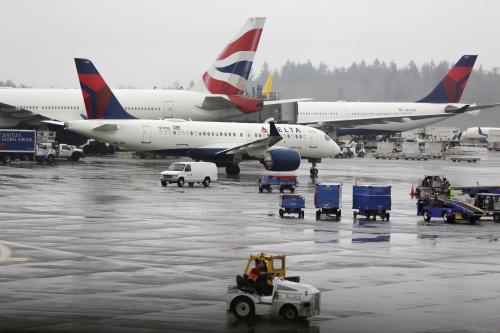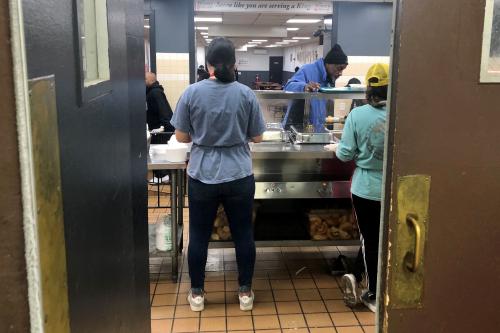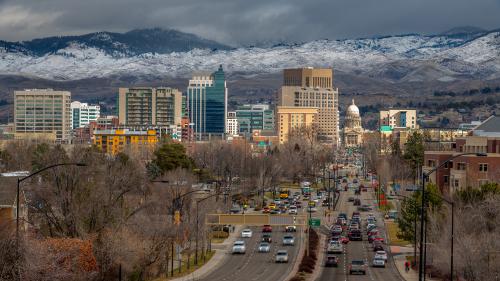As we’ve written previously, 53 million people in the U.S.—44% of the country’s workers—earn low wages. Their median hourly earnings are $10.22, and for those who work full time year-round, median annual earnings are about $24,000. These workers already sit in precarious economic circumstances, but as the COVID-19 pandemic sweeps the globe and fears of a recession abound, they’re at greater risk than ever.
Some of the most common low-wage jobs are inherently interpersonal in nature (think retail and food service) and are thus uniquely vulnerable to the spread of COVID-19, both as a health and economic matter. Many low-wage workers are barely making ends meet—we estimate that about half are either the sole earner in their family or contribute substantially to family budgets. Moreover, they are less likely than higher-earning workers to receive health insurance or paid leave through their employment.
Reports of widespread layoffs and furloughs are coming in, concentrated in retail, food service, and accommodations jobs. Our workforce and safety net programs are currently ill-equipped for job losses of this magnitude, and a host of policies are under consideration in response. These include federal efforts to provide limited paid leave to more workers, cash sent directly to workers, and assistance for small businesses.
Our data illustrate the sheer number of vulnerable workers who will need such help, and how geographically dispersed they are across the country. This highlights the need for aggressive, creative responses at the federal, state, and local levels.
Using our new interactive tool, you can explore the data on low-wage workers across 373 metropolitan areas. Depending on the region, between 30% and 62% of all workers earn low wages, with median hourly wages ranging from $8.40 to $12.65.
The largest metro areas have the highest absolute numbers of low-wage workers. For example, there are 2.7 million in the Los Angeles region (53% of the workforce), which includes 500,000 retail workers, cooks, and food servers.
Smaller regions may have smaller numbers of low-wage workers, but those numbers are still substantial within the context of the local economy. Among regions with populations between 500,000 and 1 million, for example, low-wage workers make up between 35% and 56% of the total workforce. In Albuquerque, N.M., that translates into 155,000 people, including 13,000 retail workers and 17,000 cooks and food servers. In Akron, Ohio—a region with a more industrial economic base and a whiter, older population—there are 111,000 low-wage workers, including 10,000 in retail and 13,000 cooks and food servers.
In midsized metro areas with populations between 250,000 and 500,000, low-wage workers make up 37% to 58% of all workers. In Norwich, Conn., 37% of workers (41,000 total people) earn low hourly wages, and nearly 10,000 of them are in retail or food service jobs. On the other side of the country in Eugene, Ore., there are 67,000 low-wage workers, including 7,000 food service workers and 6,000 retail workers.
As policymakers weigh different stimulus measures, they should keep these millions of low-wage workers front and center as a priority. In the short term, immediate cash assistance seems likely, and it’s the right call. But it’s a stopgap measure—many of these workers were barely making ends meet even before COVID-19. Industries such as restaurants, cruise lines, and hotels are seeking massive federal relief. As the government engages in discussions with industry groups, negotiations should include business practices on issues such as worker pay, benefits, and training that can lift workers out of the near-poverty they were already facing.
At some point, this crisis will pass. As we move through it, let’s seek to create jobs that can sustain families and communities and promote broad-based economic well-being—not simply return to the status quo.








Commentary
COVID-19 puts America’s low-wage workforce in an even worse position
March 19, 2020